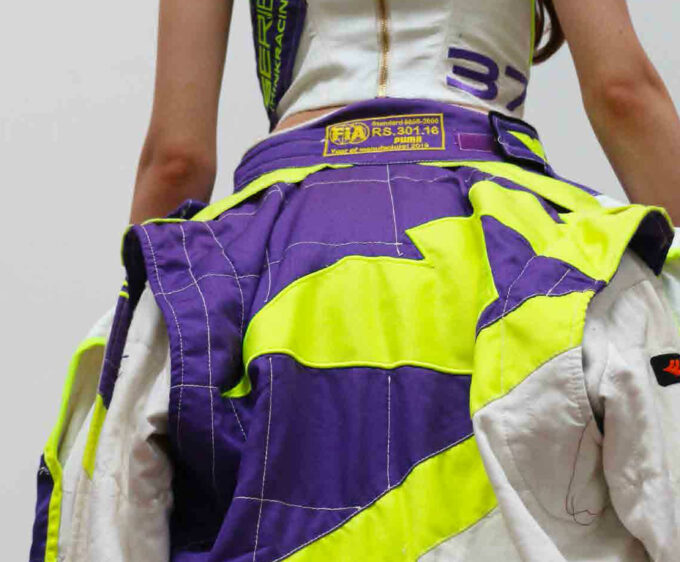
Let’s Talk Youth
Engaging in sports is like a secret recipe for youths. We explore the concoction of lifelong benefits and celebrate the power of sports with some incredible youngsters that have not only found joy and passion, but also a path to success
By Alison Root
In an era dominated by technology and sedentary lifestyles, the significance of sporting activities for youths cannot be overstated. Sports serve as more than just a means of entertainment or physical exercise. They provide a range of benefits that contribute to the holistic development and wellbeing of young individuals. From fostering physical fitness to nurturing essential life skills and promoting social cohesion, engaging in sports has the potential to shape the lives of youth and set them on a path towards success.

Personally, it’s hard to remember when sport was not a part of my life, from school sports day, being a member of the school netball team, to playing competitive tennis and golf, I’ve always enjoyed being active. Plus, sport has awarded me with so much – invaluable life skills, precious friendships, a sense of belonging, and it has opened doors to a wide range of opportunities that have shaped my career, as it will for many others. This week, we sit down with two tutors from LCF’s fashion sportswear course and meet a group of 2023 graduates to discuss the future of sportswear design.
For youngsters, contrary to the notion that sports and academics are mutually exclusive, research consistently demonstrates a positive correlation between participation in sports and academic performance. Engaging in physical activity enhances cognitive function, memory retention, and concentration, whilst regular exercise increases blood flow to the brain, stimulates the growth of brain cells and improves overall cognitive abilities. And then, of course, there’s the profound impact that sport can have on mental and emotional wellbeing. There’s nothing better than the release of endorphins, those ‘feel-good’ hormones that provide an outlet for stress, anxiety, and negative emotions.

It’s also likely that those participating in sports from a young age will develop healthy habits, establish a routine of exercise, and gain an understanding of the importance of maintaining an active lifestyle. By adopting a physically active lifestyle early on, means that kids are more likely to carry these habits into adulthood, reaping long-term health benefits. As we all know, regular involvement in sports helps to combat obesity and related health issues, such as cardiovascular diseases and diabetes.

enthusiasm

When it comes to young girls, they face unique challenges that often hinder their continued participation and progression. Despite initial enthusiasm and talent, many girls drop out of sports prematurely, missing out on the countless benefits that come with being active.
For girls going through puberty, a significant hurdle is the impact of body image and self-esteem. Society often promotes unrealistic beauty standards, so negative body image perceptions can hinder girls’ willingness to engage in sports, fearing judgment or feeling self-conscious about their appearance. Balancing academic pursuits, social life, and sports also becomes challenging, leading to reduced participation and ultimately dropouts. This week we chat to 15-year-old hurdler Isabelle Kyson who has experienced first-hand a variety of challenges. She started running aged 10, but since growing older, Isabelle has witnessed more girls dropping out of sports and this has really struck a chord with her. She is now a big advocate for helping to reverse the decline in teenage girls’ participation in sports.

Traditionally, certain sports have been labelled as “boys’ sports,” fostering an environment that discourages girls from participating, but we are slowly shattering stereotypes and rewriting the narrative. Breaking free from gender stereotypes has numerous benefits for girls because when they engage in sports like football and rugby, they gain physical strength, endurance, and coordination, as well as fostering resilience, determination, and mental toughness. These skills are not gender-specific; they are essential for personal growth and success in all aspects of life.
Photojournalist Kim Raff shot a series called ‘Rodeo Kids’, which is a great example of how gender norms are being challenged and expanded. In addition to barrel racing, she comments on the shift where girls are exploring other events such as calf roping. One of Kim’s favourite images is a little girl in her mutton busting outfit and as Kim explains, “It captures her strength and humble demeanour with a touch of badassery, which makes it a truly powerful image.”
For young skydiver Maja Kuczynsk, who began participating in the sport aged 10, it’s refreshing to hear that there are many female skydivers now, and that Skydiving is not a sport divided by gender. Men and women compete together in the same competitions and stand on the same podium. Slowly but surely barriers will continue to be broken down to create a more inclusive environment for young girls to explore their interests freely. As they witness older girls confidently participating in traditionally male-dominated sports, they will be inspired to follow their dreams and passions. By redefining the narrative and empowering girls to take part in all sports without fear or judgement can only have a positive effect on the ability to encourage participation and retain girls in sport.

Editorial Design thisisroot




